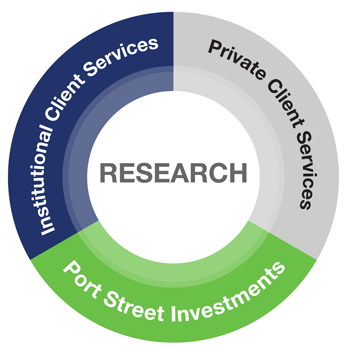Port Street Investments
- Wholly-owned subsidiary of a multi-billion dollar RIA (Registered Investment Advisor) Beacon Pointe Advisors, LLC, representing institutions and private clients
- Dedicated to offering our parent company RIA’s “Best Idea” investment strategies (or money managers) in an easy-to-use solution for investors
- In-house research team focused on finding proven but lesser-known investment managers with history of out-performance of the general market over a full market cycle
- RIA’s size and network of institutional relationships helps us source these proven, but lesser-known investment managers
Key Port Street Investments’ Manager Characteristics
- focus on highly-asymmetrical returns+
- high active share*, not closet indexers
- concentrated portfolios
- below-average turnover
- focus on tax efficiency
- RIA w/ AUM of $5B as of 6/30/2019
- Network & Access to Institutional Quality Investment Mgrs.
- Proprietary Research Methodology
+Asymmetric Returns are defined as the greater degree to which an investor participates in gains when the market rises relative to the extent the investor participates in losses when the market falls. Can be measured by comparing an investment’s up-capture to down-capture. For example, an investment with a up-capture relative to the S&P of 68% and a down-cap of the relative to the S&P of 34% would have an asymmetry ratio of 2 and be considered highly asymmetrical.
*Active share: Active share is defined as the percentage of the portfolio that differs from its passive benchmark. For a long-only portfolio, the active share measure is between 0% and 100%. An active share measure of 0% indicates the portfolio is identical to its benchmark while a 100% active share measure indicates the portfolio has no overlap with its benchmark. (Source: William Blair) Only the benchmark-differentiating holdings can generate relative out-performance. (Source: MFS)
